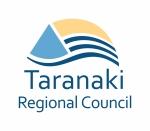Highway assessment highlights SH3's roles
Proposed changes to the way state highways are classified have put the spotlight on the economic and strategic importance of SH3.
Under changes proposed by the New Zealand Transport Agency, SH3 would be classed as a “regional strategic” highway in a four-tier system with “national strategic” at the top level. The proposed new classifications are intended to guide decisions on standards and funding for state highway maintenance and improvements.
They are based on how highways are used, and are applied using statistical thresholds including traffic volumes, freight volumes and value, population size, and international tourist flows.
The Taranaki Regional Transport Committee believes more work needs to be done on the thresholds and is to make a submission to the NZTA.
“We believe SH3 does have national strategic importance, even though its statistics don’t meet the threshold levels proposed by the NZTA,” says the Committee Chairman, Roger Maxwell.
“For example, the thresholds include the value of export freight through ports. So Tauranga is credited with the export value of all the milk that is transported on Taranaki roads before being processed and railed to the Bay of Plenty for export. That’s an anomaly, especially as all that dairy product never goes near a road in Tauranga.”
He says the value of hydrocarbon products carried within and from Taranaki by road is also not taken into account. Nor is the importance of SH3 as an alternative route when SH1 through the central North Island is closed in winter.
Mr Maxwell says the new classification system’s role in guiding funding arrangements for state highways means it will be critical to get it right.
Submissions on the proposed new classification system close at the end of March.
The Regional Transport Committee has members from the region’s four Councils, the New Zealand Transport Agency and a number of stakeholder groups. It is administered by the Taranaki Regional Council.
